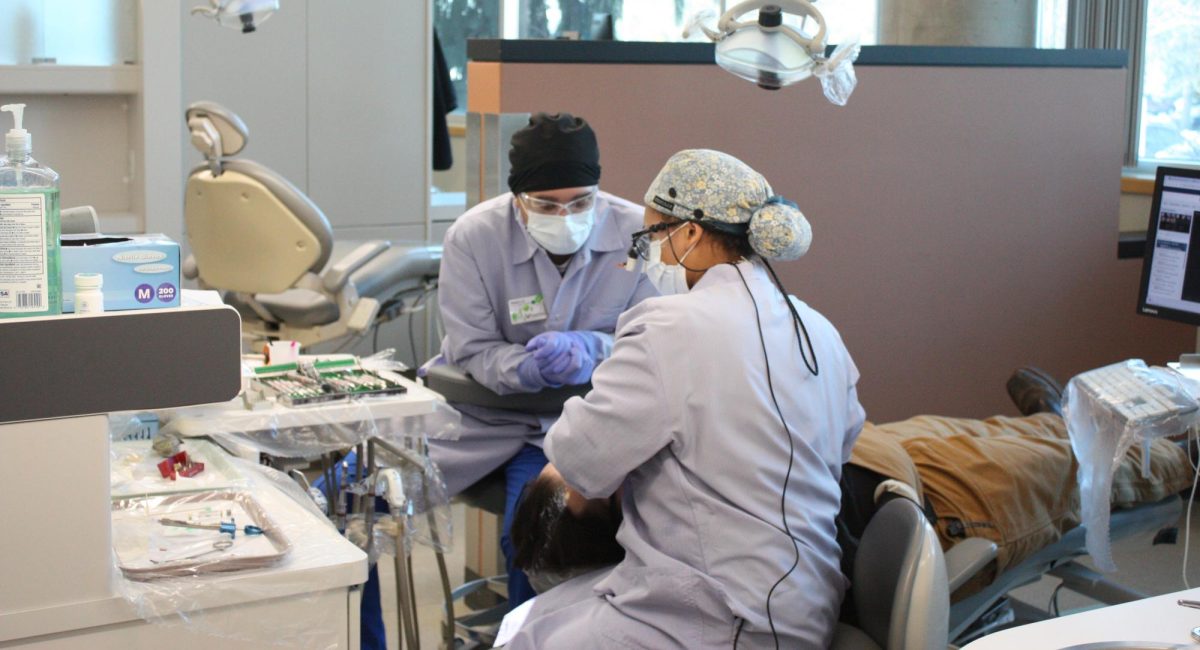Awareness and concern of Ebola ripples across the US
September 25, 2014
Search ‘Ebola’ on the Internet and there are images from West Africa of people donning white suits carrying the dead away in body bags.
The largest outbreak of Ebola, with a fatality rate of 90 percent and no licensed vaccine available, claimed more than 2,500 lives during the past six months and the number is still rising.
The infection occurs mostly on the threshold, with rainforests in Central and West Africa. One cause is the interaction between humans and animals. Guinea, Liberia and Sierra Leone were hit hard because their medical facilities are short on staff members, and on top of that shortage there is not enough personal protective equipment for the workers to wear, according to the World Health Organization.
In Africa, they are struggling to utilize contact tracing.
The Centers for Disease Control and Prevention defines contact tracing as a method of containment – it was used to prevent the spread of severe acute respiratory syndrome, known as SARS. The challenge of contact tracing is finding everyone who came into contact with an infected individual and then monitoring them for 21 days. If a person being monitored becomes infected, then the same process should be done for them.
According to the United Nations, only 16 of 44 crisis areas in West Africa have satisfactory contact tracing.
“This is a dreaded virus that is highly contagious, but only under two very specific settings,” said Margaret Chan Fung Fu-chun, the director-general for pandemic influenza and assistant director-general for communicable diseases at the WHO. “First, during care of patients at home by family members or in a hospital setting without proper protection against infection. Second, during certain traditional burial practices that involve close contact with a highly infectious corpse.”
Ebola is spread through direct contact of body fluids, such as blood, urine, saliva and semen. A man recovered from Ebola can still have it in his semen for up to seven weeks.
The WHO recognizes five strands of the Ebola virus, four of which can produce disease in humans. Ebola Zaire is the strand responsible for the current outbreak in Africa. The WHO’s records show that the last reported case of Ebola Zaire developed in the Democratic Republic of Congo in 2008. The death toll then was 14.
According to the Mayo Clinic website, Ebola is not contagious until symptoms appear.
Ebola’s symptoms include a sudden fever, a sense of weakness, muscle pain, sore throat and headaches. These are followed by an escalation of symptoms like diarrhea, vomiting, rashes and chances for internal and external bleeding.
The incubation period of Ebola ranges from 2 to 21 days. If a person has no symptoms after 21 days of coming into contact with the disease, then they are not infected.
“The United States is not in immediate danger,” said Dr. Frank Glover, urologist and president of the U.S. non-governmental organization SHIELD. “This isn’t something we should panic about, but it’s something we should be concerned about.”
Compared to the affected African countries, the United States is better equipped with medical staff and is prepared with isolation centers nationwide, according to the CDC.
Ebola is an epidemic though. Many people are affected and continue to pass it along, from person to person, over a wide area.
As a precaution, the CDC posted a level three travel warning, which recommends that people avoid nonessential travel to countries with cases of Ebola- this includes education-related visits.
Student health centers at colleges and universities are on alert for patients who traveled to countries with an outbreak or who had contact with an infected person exhibiting symptoms of Ebola. If there is a chance of infection, the patient will be isolated while tests are done.
Schools have been asked not to quarantine students or faculty members based off their travel history alone.
As reported by Eastern Washington University’s director of media relations Dave Meany, there are three enrolled students from West African nations, but not from countries where there is an Ebola outbreak.
The CDC and the Department of Defense has increased the testing capabilities of laboratories in the United States and began developing and distributing information and tools for public health investigations.
If Ebola does make it into the U.S., there are protocols set up by the CDC to ensure that it does not spread. Contact tracing is one of them. Other protocols require teaching airline crew members how to identify Ebola, to report passengers exhibiting symptoms to the CDC, to isolate and transport ill passengers to a medical facility and how to disinfect the airplane afterwards.
EWU has an Ebola information fact sheet on their website to inform students, faculty and family members about the disease. According to Chief Housing Officer Josh Ashcroft, student housing at EWU educates their residents on disease prevention and reminds them to wash their hands often and to be aware of different symptoms.
“A lot of it is working with Health and Wellness and with our staff to make sure the students are well educated about ways that they can limit the spread of any kind of disease,” said Ashcroft. “When we do have situations come up, we work directly with the student to try and figure out how we can help meet their needs but also prevent the spread of the disease to the greater community.”








